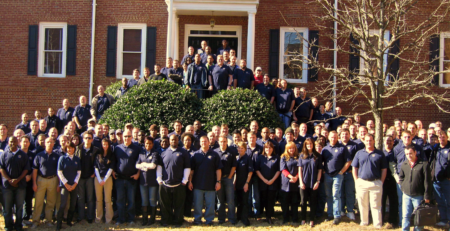How to land a cybersecurity job – 5 tips for getting hired in this fast-growing, high-paying segment of the IT industry
Cybersecurity jobs are plentiful, from government, financial services and utilities to manufacturing and retail. But what skills do IT professionals need to qualify for these high-paying jobs?
RELATED: IT certifications lead to jobs, higher pay (CED Solutions is a leading provider of CyberSecurity training and Certifications – www.cedsolutions.com)
We asked the experts and came up with this list of five tips for landing a top-notch cybersecurity job:
1. Get certified.
Security-related certifications are a prerequisite for most commercial cybersecurity jobs and all defense-related IT security jobs. These credentials range from basic CompTIA Security+ to the gold standard ISC2 Certified Information Systems Security Professional (CISSP).
Other popular security certifications include those from GIAC, ECCouncil and ISACA. Vendor-specific certifications from Cisco, RSA, Symantec and others are also in demand.
“There are a lot of security certifications that are very well accepted and are extremely beneficial to the individual,” says Jacob Braun, president and COO of Waka Digital Media, a Boston-based IT security consultancy. “They demonstrate a body of knowledge and experience…Some of those certifications are more than written exams. They have some practical components, which are an additional hurdle to achieve.”
“I like to see the CISSP,” says Dave Frymier, Unisys CISO. “Somebody who has the CISSP has passed a pretty comprehensive test and is likely to share terminology with you so you can make sure you are both talking about the same things.”
Verizon, which compiles an authoritative annual report on security breaches, recommends having IT security staff pass a course such as GIAC Incident Handler so they know how to properly respond to a breach.
“A lot of organizations lack personnel on hand who know what to do in the event of a data breach,” says Bryan Sartin, director of Verizon’s Research Investigation Solution Knowledge (RISK) team. “They need to know how to freeze the environment, how to move toward incident containment, and how to maintain crime scene integrity.”
2. Join the military or the feds.
Most companies prefer to hire cybersecurity experts with experience in the U.S. military or law enforcement agencies.
“It’s not a requirement, but it helps,” Braun says. “Often times, you’ll find an individual who is coming from the military or a federal government agency who has received a variety of cybersecurity training that is not yet attainable in the commercial realm.”
“Military experience is good to see,” Frymier says. “In fact, the security director that we hired last year is ex-military intelligence. The ability to use these [security information and event management] systems and track down persistent threats are skills more closely aligned with the intelligence community than with the IT community.”
Verizon has members of its security breach investigation team with military intelligence and law enforcement experience. “The law enforcement are great at interviews…If it’s an inside job, they can usually spot the guilty party,” Sartin says. “The military people are more process oriented.”
3. Learn SAML.
The issue of information security, identity and access management in the cloud is a major concern for CIOs, who are deploying software-as-a-service applications such as Salesforce and Concur to complement their enterprise applications. They are looking for employees who understand how to extend their directory services to control access to cloud applications.
-
Video/Webcast
Sponsored -
White Paper
“We want individuals who understand the technology, who understand the policy and who understand the intelligence side of things,” Braun says. “If someone has experience deploying security solutions in a new business model, such as the cloud model, that’s very valuable.”
One specific skill related to cloud security that’s in demand: SAML. The Security Assertion Markup Language is an emerging standard that allows enterprises to extend their directory, authentication and identity management systems into cloud-based applications.
“You can learn SAML very quickly, and it’s incredibly applicable because almost all the [Software-as-a-Service] companies support a SAML interface,” Frymier says. “We’ve implemented a SAML product in the last year and half or so. It allows us to create an interface to an LDAP store like Microsoft Active Directory and in a secure manner expose account information from Active Directory to SaaS applications. We can do account management inside our Active Directory and have that immediately reflected in our SaaS applications.”
4. Master mobile security.
As more organizations adopt Bring Your Own Device policies, they are facing a host of challenges including how to secure information stored on a range of devices that they don’t own.
Mobile device management “is a sweet spot for me,” Frymier says. “I’m the executive of interest for our consumerization effort because it has such security aspects to it….We have a Bring Your Own Device program, and now 4,000 employees have their own iOS devices. We have got them set up in a way that’s secure using Microsoft ActiveSync.”
Unisys also is focusing on security in its mobile application development efforts.
“The people who understand mobility at a very deep level tend to be very young, often right out of college. What we find is that we need to pair them up with more senior people who understand backend systems,” Frymier says. “You have all of these sexy streams of data on mobile apps. You need to understand how it gets in and how it gets out and how authentication is done and who has access to it.”
5. Learn to analyze data.
Cybersecurity pros are masters at finding needles in haystacks. They need to deal with huge volumes of data gathered by security devices and find anomalies that indicate security breaches are occurring.
“One area where we see a skill gap is in general log monitoring,” Sartin says. “Everyone seems to have someone who is responsible for monitoring logs, but these people don’t have enough experience. They look at endless amounts of data, and they don’t find the evidence of the SQL injection,” which is the most common type of security breach.
IT professionals need to brush up on their ability to analyze log monitoring data and find important trends.
“Cybersecurity experts need to understand and analyze the trends in the log data to find anomalies and other signs of security breaches,” Braun says. “They need to understand how data comes in and leaves an organization and how it should be handled. They need to understand how partner organizations work and competitive organizations work, so they’re in the best position to identify when something is malicious or a threat.”
http://www.networkworld.com/article/2188252/access-control/how-to-land-a-cybersecurity-job.html
CED Solutions is a Cisco Learning Partner, Microsoft Gold Learning Partner and the #1 location for Microsoft Certifications in North America for the last 6 years combined. CED Solutions is a CompTIA Partner, EC Council Partner, and many others and is one of the largest providers of training in North America. The Atlanta facility provides IT training for up to 300 students per day, with separate buildings dedicated to training. CED Solutions provides training for up to 10,000 students per year and students take up to 800 certification exams every two weeks.
CED Solutions provides training and certification for MCSD: SharePoint 2013 Applications Developer; MCSE: SharePoint 2013; Cisco CCNA; Cisco CCNP; Cisco CCNA Security; Cisco CCNP Security; Cisco CCNA Voice; Cisco CCNP Voice; Microsoft MCSA: Windows 2012 Server; MCSA: Windows 2008 Server; MCSA: SQL 2012 Server; MCSE: Business Intelligence SQL 2012 Server; MCSE: Data Platform SQL 2012 Server; MCSE: Desktop Infrastructure Windows 2012 Server; MCSE: Server Infrastructure Windows 2012 Server; MCPD: 6 Cert Visual Studio Developer; MCSD: Windows Store Apps C#; MCSD: Windows Store Apps HTML5; IT Healthcare Technician and many more.
CED Solutions, LLC, www.cedsolutions.com, info@cedsolutions.com, (800) 611-1840





